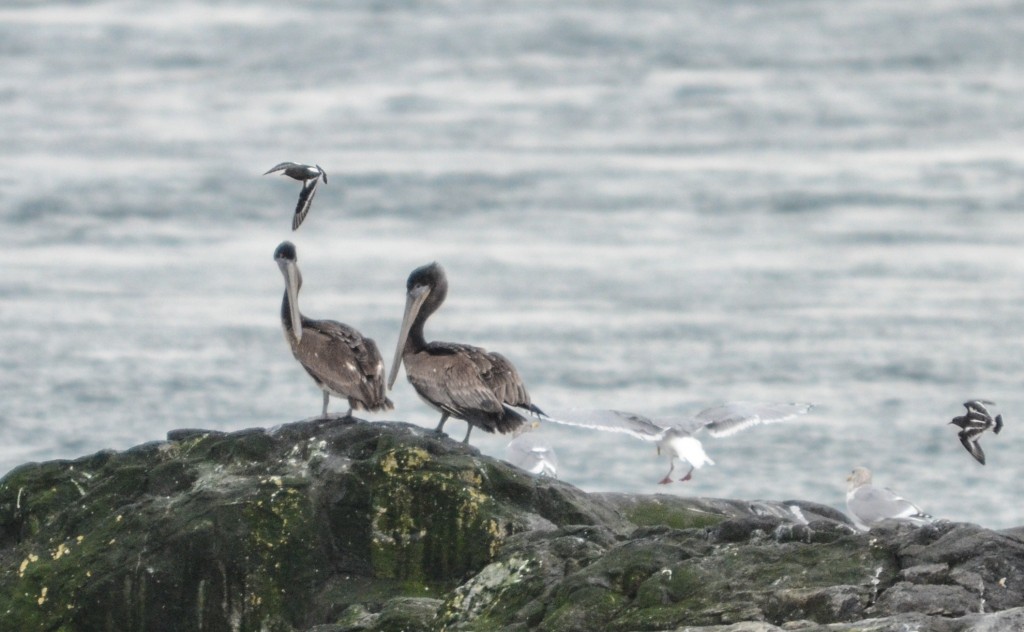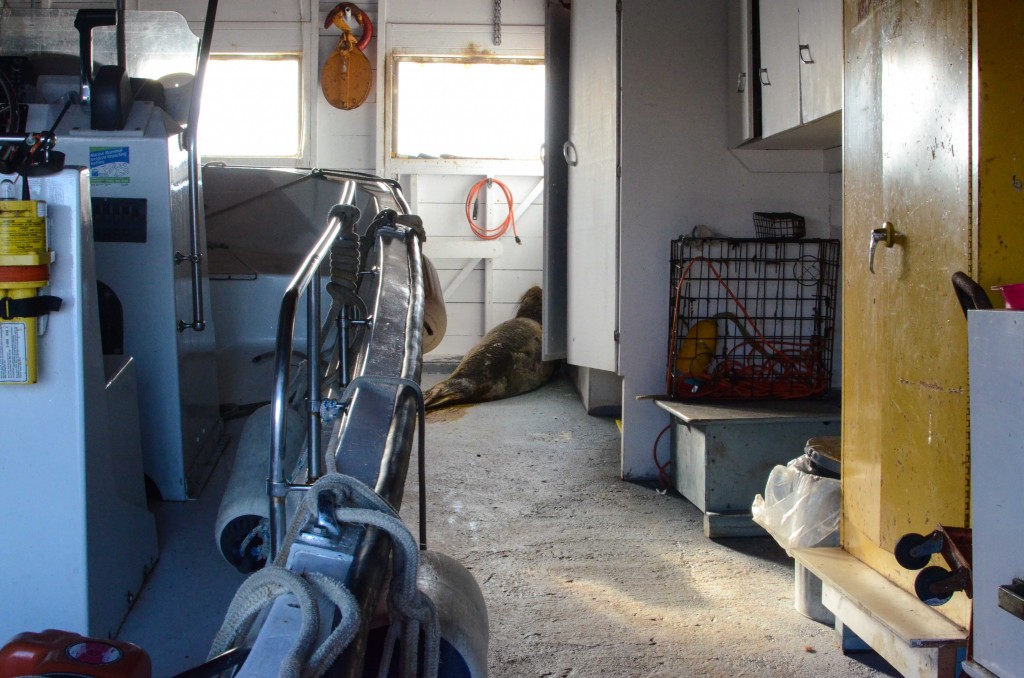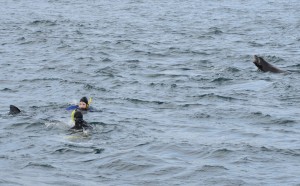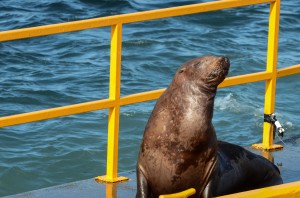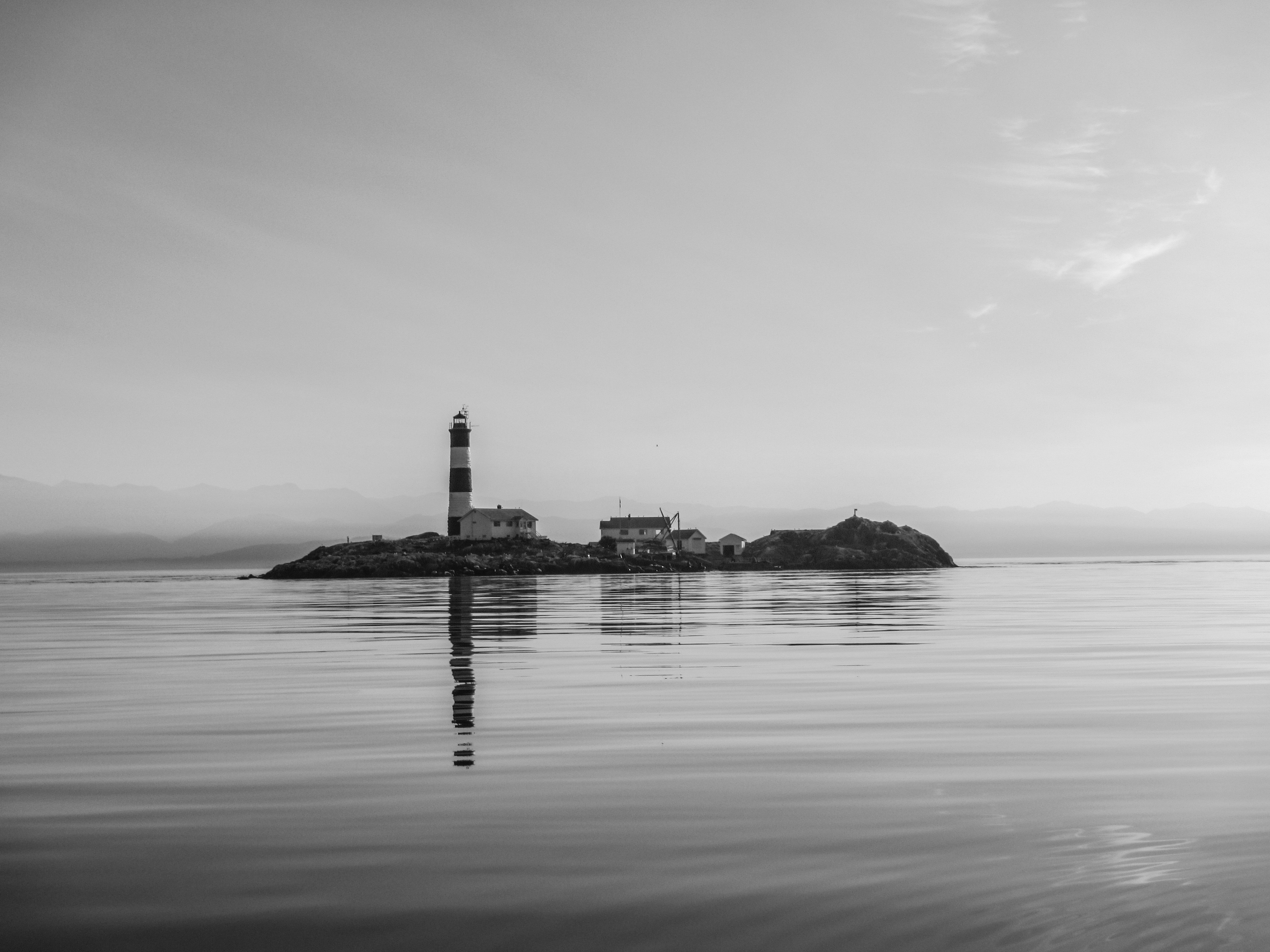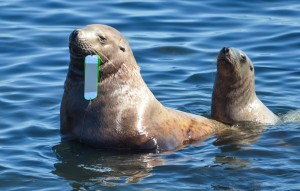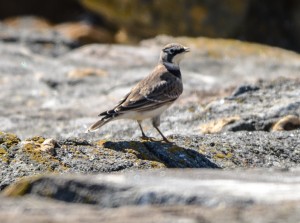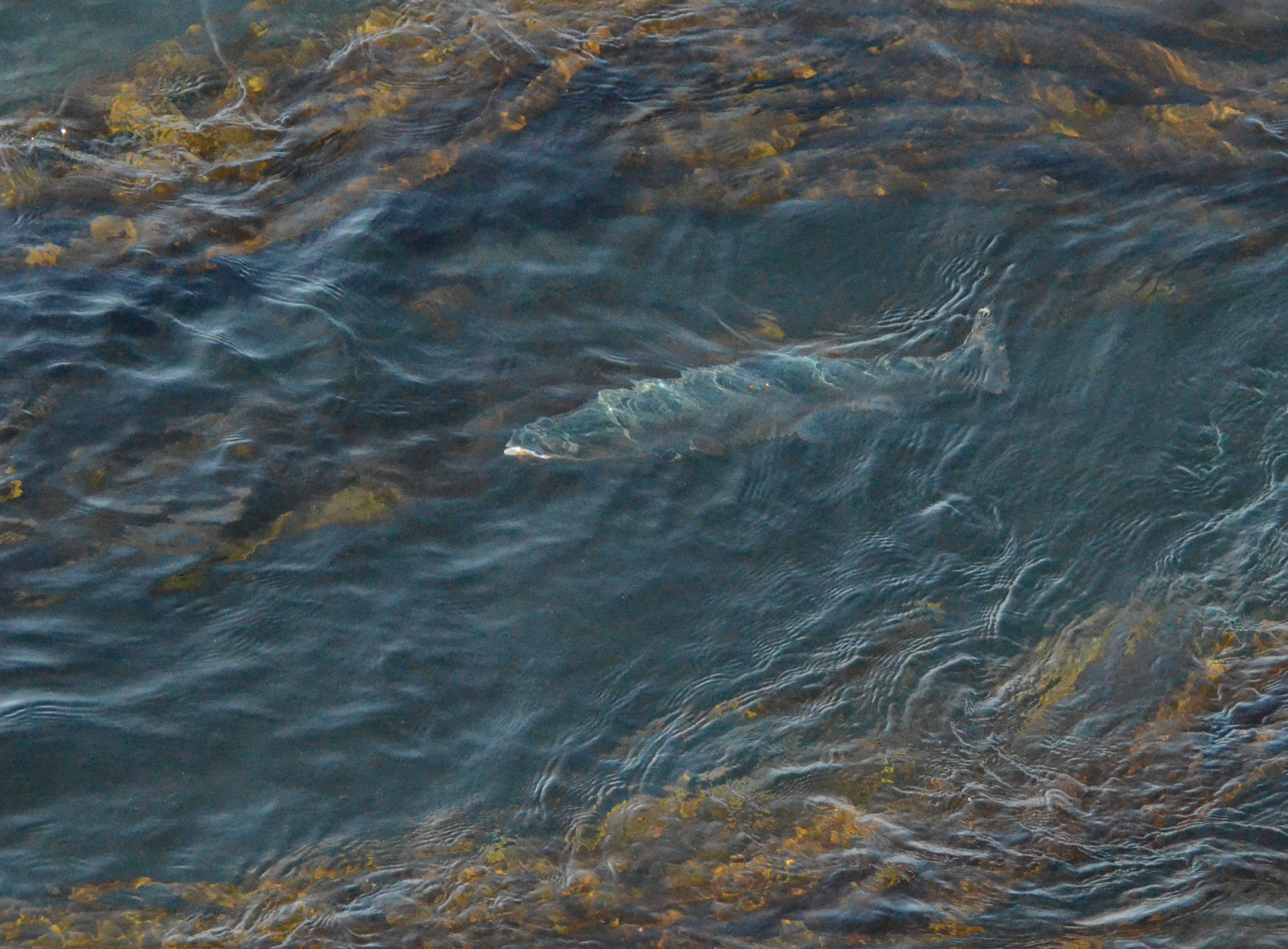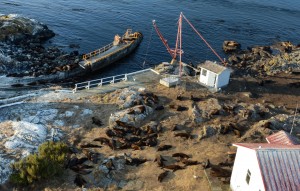A few days ago we had two unusual visitors to our waters. Two Brown Pelicans (Pelecanus occidentalis) spent several days on Great Race and North Rocks. Brown Pelicans, though the smalles of pelicans, are enormous birds weighing up to 6 kilos and measuring up to 135 cms with a wingspan of up to 2.5 meters.
We have had two other unusual visitors in the last week. I discovered a Barred Owl in the boathouse attacking a Starling (another recent arrival), and Pam our avid photographer friend from England got several pictures of Peregrine Falcons that came through hunting sparrows and starlings. Pam’s pictures can be seen at: http://www.flickr.com/photos/
Another tagged e-seal showed up in the boathouse yesterday.
Animal Census Nov 8 2012
| Species | Current Population (Est) |
| Stellar/Northern Sea Lion | 30 |
| Elephant Seal | 7 |
| Harbour Seal | 200 |
| California Sea Lion | 50 |
| Glaucous-winged Gull | 150 |
| Herring Gull | 300 |
| California Gull | 30 |
| Heerman’s Gull | 80 |
| Black Turnstones | 100 |
| Surfbird | 6 |
| Pelagic Cormorants | 40 |
| Brandt’s Cormorant | 30 |
| Killdeer | 6 |
| Dunlin | 16 |
| Harlequin Ducks | 20 |
| Canada Goose | 14 |
| Bald Eagle | 3 |
| Black Oyster-catcher | 40 |
| Sanderlings | 8 |
| Starlings | 8 |
| Race Rocks Eco-Guardian | 1 |
| Rhinoceros Auklet | 100 |
| Common Murre | 100 |
| Sparrows | 20 |
| Brown Pelican | 2 |
| Barred Owl | 1 |
| Peregrine Falcon | 2 |


